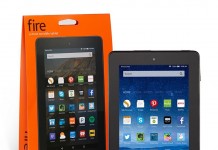![]() The ereader is changing the way we read books, but it has yet to enhance the way we discover titles. I am in the middle of shaking down my new Kindle. The Kindle store only has about 300,000 titles, precious few considering that three times that number of new titles appear annually (Bowker’s, 2003, 2007). I could not find Nabokov’s Lolita, though I credit Amazon’s preparation for the Canadian Kindle release, stocking Giller prize winners such as MacIntyre’s The Bishop’s Man. Once I found a potential purchase, the online reviews were useful, as was the free first chapter sent to my device. Traditional bookstores might find it worrisome that I almost purchased a book off their shelves, till I remembered I had a Kindle and purchased the ebook for half the price.
The ereader is changing the way we read books, but it has yet to enhance the way we discover titles. I am in the middle of shaking down my new Kindle. The Kindle store only has about 300,000 titles, precious few considering that three times that number of new titles appear annually (Bowker’s, 2003, 2007). I could not find Nabokov’s Lolita, though I credit Amazon’s preparation for the Canadian Kindle release, stocking Giller prize winners such as MacIntyre’s The Bishop’s Man. Once I found a potential purchase, the online reviews were useful, as was the free first chapter sent to my device. Traditional bookstores might find it worrisome that I almost purchased a book off their shelves, till I remembered I had a Kindle and purchased the ebook for half the price.
The Kindle store is linked to the reading management software running on the ereader. I tested deleting my purchased content — the program restored it, apparently synchronizing with my account at the bookstore; nice. Still, I get an unnerving feeling from most proprietary software. Where the proprietor giveth will it also taketh? It is a complicated feeling. Consider digital rights management (DRM), the software Amazon uses to try to protect its content. On the one hand, I respect the right of authors, publishers and distributors to protect and profit from their work. I genuinely prefer to pay for my books. On the other hand, DRM often seems at least silly. It is easy to hack, and it filters out authors who would prefer to be DRM-free for self-promotion. Quick to protect its own rights, when it comes to ebooks, Amazon has been slow to respect book-sharing practices traditional in libraries and among friends, and negligent of author compensation for text-to-speech derivations. Not that all authors are worried about it. Some authors get the idea that protectionism can be detrimental to book discovery.
Fortunately there appears to be a growing number of options for getting other books on a Kindle. For example, people can convert books in ePub format from Google, Open Library and other sources to the Kindle-readable MOBI format. My test with the open source Calibre software worked quite well. The more I think about it, the nuttier it seems that a reading device would be hard-wired to a single vendor. After all, reading is about opening our minds to divergent sources. What is needed is a vendor-neutral, open source reader that can access multiple book sources.
Editor’s Note: This article, the third in a series, is reprinted, with permission, from John Miedema’s blog. John is a graduate of the Master of Library and Information Science program at the University of Western Ontario. In October, he presented at the Library of Congress on his recently published book, Slow Reading. He also developed open source software which links bibliographic data from Open Library to web pages and library catalogues. Articles on the software were published in Information Standards Quarterly and the Code4Lib journal. PB

































If DRM is there to protect the publisher, distributor or author then why does Amazon apply DRM to public domain books that are not owned by them and that are free. Who are they protecting? Why must I put up with not being able to change the EXIF data, which is often incorrect, on a free file? I guess I just have to find that book in a better site, like feedbooks, so I can enjoy the benefits of no DRM! Oh, and while I am there I may as well get some other books as well.
Hi Al, escaping may not so be so easy as choosing a different book source. Reader Andrys observed that “the Sony readers use ePub WITH Adobe DRM over it.” Escaping DRM may depend on the ereader you choose.